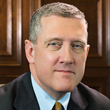President's Message: Some Considerations for Dividend Payments to Fed Member Banks
The Federal Reserve was established by an act of Congress more than 100 years ago. The regional Reserve banks—such as the St. Louis Fed—were set up, by law, as private corporations owned by their member banks. This was done on purpose as part of a compromise to disperse throughout the country power that might otherwise be disproportionately centered in Washington, D.C. The Federal Reserve Act included a provision that member banks would provide capital to the Reserve banks.1 This allowed for a source of funding for the Reserve banks since there were no appropriations from Congress. This was, of course, very handy from the congressional perspective.
While Fed member banks are required to contribute capital, the contribution is illiquid because there is no market for the equity position. Unlike stock in a typical U.S. corporation, stock in the Fed cannot be bought or sold, nor can it be used as collateral. From the perspective of member banks, the requirement that they contribute capital to the Fed means that they cannot use that capital for other purposes, such as supporting loans and other investments. Sometimes this is referred to as "dead capital."
The Federal Reserve Act did, however, recognize this situation and address the sterility of the capital requirement. The act included a provision that member banks in a Federal Reserve district would be paid a dividend of 6 percent annually on their paid-in capital stock. While this has worked well for 100 years and has not been much of an issue, these dividend payments have recently drawn the attention of Congress as it seeks to find sources of revenue.
In 2014, the total amount of dividends paid by Federal Reserve banks to their member banks was about $1.7 billion. In an effort to help fund the recent transportation bill, a congressional proposal suggests reducing the dividend payment rate from 6 percent to 1.5 percent for member banks that have over $1 billion in assets. This proposal would arguably put a tax on member banks to finance roads and bridges. Such a proposal is not in line with the benefit principle of taxation, which suggests that taxes for roads and bridges should come from the people who use the roads and bridges.
The long-established dividend rate has not varied over time. The 6 percent has held when short-term interest rates in the U.S. were as high as 20 percent, circa 1980, and when they were very low, as they are today. It is possible that congressional concern relates in part to the inflexibility of the dividend rate. To fix that problem, however, it does not make sense to replace one inflexible rate with another inflexible rate. One alternative would be to make the dividend payment more flexible, moving up and down naturally with the general level of interest rates. The dividend rate could be made adjustable, perhaps by linking it to a benchmark rate of interest like the rate on a 10-year U.S. Treasury security. This could be interpreted as saying, in effect, that the money being borrowed by the federal government from the private sector to capitalize Reserve banks would garner the same rate of return as other money borrowed by the federal government. This might be a reasonable principle on which Congress could settle this issue.
Another possible resolution of this issue would be to expand the fraction of required capital that remains on call to 100 percent from the current 50 percent. As it stands now, a member bank is required to commit capital to the Reserve bank, but half of the required amount remains "on call" and the other half has to actually be paid in, with the Fed paying dividends on the latter portion. Since the probability that the Reserve bank would have to call in capital is very remote—many would say zero—Congress may wish to consider simply making the entire required capital amount "on call." This would relieve the member banks from having "dead capital" and, so, would eliminate the dividend issue altogether, with minimal changes to the structure of the Fed. Implementing this proposal would require Reserve banks to refund the current capital contributions of the member banks ($28.6 billion at year-end 2014).
In summary, recent proposals in Congress suggest taking revenue away from Fed member banks to pay for needed national transportation improvements. Such a proposal means that Fed member banks would be saddled with low return, "near-dead" capital. The proposal violates the benefit principle of taxation. Nevertheless, Congress could achieve the goal of a more flexible dividend rate by tying it to a benchmark rate, such as that on a 10-year Treasury security. Alternatively, Congress could eliminate the dividend issue altogether by legislating that the entire amount of required capital be "on call," whereas only half of required capital is on call today.
Endnote
- Member banks own stock in the Reserve banks. A member bank's stock is equivalent to 6 percent of its capital and surplus; half of that amount is paid in. For more information, see The Federal Reserve System: Purposes & Functions, at www.federalreserve.gov/pf/pdf/pf_1.pdf. [back to text]
Views expressed in Regional Economist are not necessarily those of the St. Louis Fed or Federal Reserve System.
For the latest insights from our economists and other St. Louis Fed experts, visit On the Economy and subscribe.
Email Us


